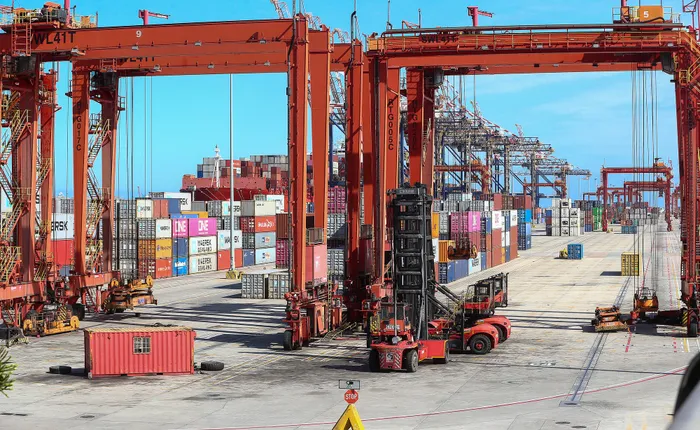South Africa’s recovery gains fragile momentum amid global headwinds

While power supply stability improved following reforms at Eskom and new renewable energy capacity additions, the IMF notes that energy and logistics bottlenecks continue to suppress productivity and investment.
Image: Leon Lestrade/Independent Newspapers
South Africa’s economy is projected to expand by 1.1% in 2025, up slightly from 0.5% in 2024, according to the International Monetary Fund’s (IMF) October 2025 World Economic Outlook (WEO) released on Tuesday.
Growth is expected to hold at 1.2% in 2026, signaling a slow and uneven recovery as global and domestic constraints weigh on output.
The IMF’s forecast underscores the country’s fragile momentum within a volatile international environment marked by rising trade barriers, weaker global demand, and tightening fiscal positions across developing economies.
Sub-Saharan Africa as a whole is projected to grow 4.1% in 2025, but the Fund warns that South Africa’s rebound remains well below regional averages due to persistent structural and policy challenges.
While power supply stability improved following reforms at Eskom and new renewable energy capacity additions, the IMF notes that energy and logistics bottlenecks continue to suppress productivity and investment.
Frequent disruptions in rail and port operations have limited the competitiveness of key export sectors such as mining and manufacturing.
The Fund warns that without decisive structural reforms to improve infrastructure governance, streamline regulations, and enhance investor confidence, South Africa’s potential growth will remain capped around 1.5% over the medium-term.
Inflation is expected to ease gradually through 2025, aided by lower global fuel and food prices and a stable rand, following a period of volatility in 2024.
However, the IMF cautions that public debt dynamics remain concerning, with rising interest costs and weak revenue collection threatening fiscal sustainability.
The government’s debt-to-GDP ratio is projected to exceed 75% by 2026, and fiscal space remains limited amid growing demands for social spending and infrastructure investment.
“Without credible consolidation and growth-enhancing reforms, debt dynamics could become unsustainable,” the IMF warns.
Although job creation has modestly improved in sectors like tourism, finance, and services, unemployment remains entrenched above 32%, with youth unemployment still above 45%.
The IMF emphasizes that stronger private investment and labor market reforms are essential to achieve inclusive growth and address widening social inequalities.
The global economy, the IMF says, is “in flux,” with global growth slowing to 3.2% in 2025 amid ongoing trade fragmentation and policy uncertainty.
For emerging markets like South Africa, this translates into weaker export demand, tighter financing conditions, and reduced development assistance as advanced economies prioritize domestic spending.
Sub-Saharan Africa’s growth outlook is buoyed by robust activity in Nigeria, Kenya, and Côte d’Ivoire, but South Africa’s recovery remains “hesitant and vulnerable to shocks.”
The report highlights that cuts in global development aid and higher borrowing costs are adding strain to low- and middle-income economies, including South Africa.
The IMF recommends that South Africa accelerate energy reforms, strengthen the governance of state-owned enterprises, and implement “credible fiscal consolidation anchored in growth.”
Monetary policy, it says, should remain focused on maintaining price stability while supporting recovery.
With global uncertainty rising and protectionism reshaping trade flows, the Fund concludes that South Africa’s path forward will depend on reigniting domestic confidence and structural reform momentum to unlock long-term potential.
BUSINESS REPORT